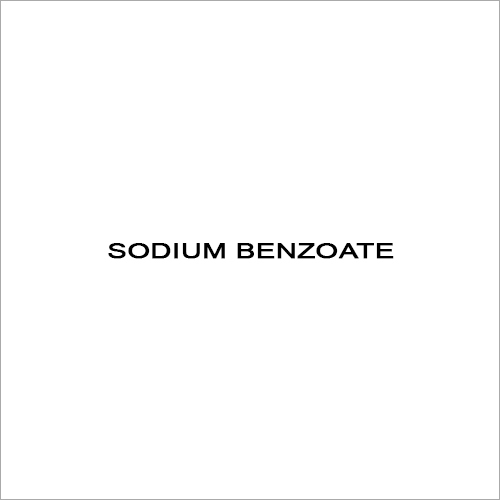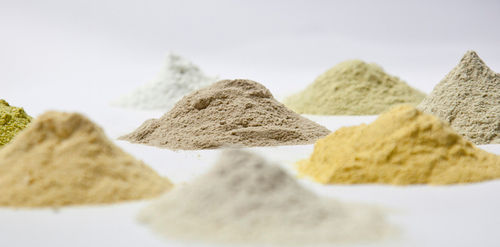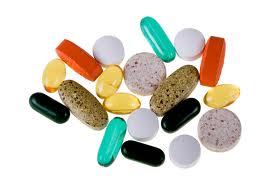Sodium Benzoate
500 INR/Kilograms
Product Details:
- Taste Other
- Ph Level pH % Active Benzoic Acid 5 13.7 6 1.55 7 0
- Shelf Life 6 and 13 weeks Week
- Smell Fragrant
- Particle Size 100 micrometers (1.3% <125 micrometers).
- Molecular Weight 144.11 g/mol Grams (g)
- Loss on Drying max 2.0%
- Click to View more
X
Sodium Benzoate Price And Quantity
- 450.00 - 500.00 INR/Kilograms
- 500 INR/Kilograms
- 25 Kilograms
Sodium Benzoate Product Specifications
- pH % Active Benzoic Acid 5 13.7 6 1.55 7 0
- white crystalline powder
- Other
- Powder
- Ucephan;FEMA Number 3025;Sobenate;Sodium Benzoate (food grade);FEMA No. 3025;Sodium benzoate (TN);Sodium benzoate solution;EPA Pesticide Chemical Code 009103;Benzoate of soda;Benzoic acid, sodium salt;Antimol;Sodium benzoate [USAN:JAN];Sodium benzoate (JP14/NF);Benzoan sodny [Czech];Benzoic acid,compounds,sodium salt;Benzoesaeure (na-salz) [German];Sodium Benzoic acid;Sodium Benzoate - BP98;
- 100 micrometers (1.3% <125 micrometers).
- 144.11 g/mol Grams (g)
- Sodium benzoate
- 6 and 13 weeks Week
- Fragrant
- 208-534-8
- 29163140
- C7H5NaO2
- C7H5NaO2
- Room Temperature
- 99+%, extra pure.
- freely soluble in water
- Sodium benzoate is commonly used as a preservative in cosmetics and personal care items, such as hair products, baby wipes, toothpaste, and mouthwash ( 2 ). It also has industrial uses. One of its biggest applications is to deter corrosion
- max 2.0%
- 532-32-1
- >300
- Pharmaceutical Intermediates
- 249.3 at 760 mmHg
- Cosmetic Grade
- Max 10ppm
Sodium Benzoate Trade Information
- india
- Letter of Credit (L/C) Telegraphic Transfer (T/T) Letter of Credit at Sight (Sight L/C) Cash Advance (CA) Cash in Advance (CID)
- 1000 Kilograms Per Day
- 7 Days
- Free samples are available
- DRUM
- Eastern Europe Central America Africa Middle East South America Western Europe Australia Asia North America
- ISO, GMP
Product Description
Sodium Benzoate offered by us, is widely used for reducing the inflammation and allergies. This chemical acts as a preservative which is added to some sodas, packed foods, and other personal care products to increase their shelf life. This chemical is clinically tested under numerous parameters to ensure its effectiveness. It is a versatile chemical with preservative, medicinal, and other functions. This chemical is very cost effective and can be easily availed at nominal pricing, by our valued clients, in bulk quantities.
Sodium Benzoate Properties:
- CAS No.: 532-32-1
- Formula: C7H5NaO2
- Molecular Weight: 144.12
- Synonyms: Ucephan;FEMA Number 3025;Sobenate;EPA Pesticide Chemical Code 009103;Benzoate of soda;Benzoic acid, sodium salt;Antimol;Benzoan sodny [Czech];Benzoic acid,compounds,sodium salt;Benzoesaeure (na-salz) [German];Sodium Benzoic acid;
- EINECS: 208-534-8
- Density: 1,44 g/cm3
- Melting Point: >300 degree centigrade (lit.)
- Boiling Point: 249.3 degree centigrade at 760 mmHg
- Flash Point: 111.4 degree centigrade
- Solubility: H2O: 1 M at 20 degree centigrade, clear, colorless
- Appearance: White crystalline powder
- Risk Codes: 36/37/38-62-63-68
- Safety Description: 24/25-36-26
How does it work
As sodium benzoate penetrates into the food cells and balances the pH level, the overall acidity of the food increases. Salt benzoate prevents fungi from growing and spreading by lowering the pH level of certain foods.
Applications. Or where it is used
As a preservative, sodium benzoate is often found in hair conditioners, baby wipes, toothpaste, and mouthwash. Additionally, it is used in the industrial sector. Its main application is to prevent corrosion.
Manufacturing process
A reaction between chlorine and toluene produces benzotrichloride. Benzoic acid is refined to form sodium benzoate in all cases. The acid can be dissolved in sodium hydroxide solutions to accomplish this. The chemical reaction results in water and sodium benzoate.
How to use
It works in most sodas, vinegar, fruit juice, and salad dressings mixed with other ingredients. In addition, it stops the fermentation of wines. In acidic foods, such as carbonated drinks, jams and juices, pickles, and condiments, it is mostly used as a preservative.
Dosage of usage
FDA permitted the use of sodium benzoate as the first preservative in foods. It is still widely used in food additives today. Generally Recognized As Safe (GRAS) means experts consider it safe as long as it is used in accordance with the label. It is a food additive approved globally and assigned the identifying number 211. It can be found in European food products under the product number E211 as it inhibits the production of potentially harmful bacteria, mold, and other microbes in food, thus preventing deterioration. Acidic foods benefit most from it.
Side effects
Your risk of inflammation, oxidative stress, obesity, ADHD, and allergies may be increased by sodium benzoate. It may also convert to benzene, a potentially carcinogenic product, but low levels are considered safe in beverages.
Warnings and precautions while using this product
Touching the skin or eyes should be avoided. Protect your hands/clothes/eyes/face with protective clothing and gloves. For several minutes, rinse with water if the substance gets into your eyes. If necessary, remove contact lenses.
Tell us about your requirement

Price:
Quantity
Select Unit
- 50
- 100
- 200
- 250
- 500
- 1000+
Additional detail
+91
Email









 : nilesh.sheth70
: nilesh.sheth70
